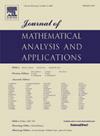System tautochrone motion path for centrifugal pendulum vibration absorbers
IF 1.2
3区 数学
Q1 MATHEMATICS
Journal of Mathematical Analysis and Applications
Pub Date : 2025-08-27
DOI:10.1016/j.jmaa.2025.129994
引用次数: 0
Abstract
Centrifugal Pendulum Vibration Absorbers (CPVAs) have been in use for over a century and have become integral in addressing torsional vibrations in rotating machinery across a wide range of applications in both the aerospace and automotive industries. Proper tuning of the pendulum, such that it counteracts the engine-order fluctuating torques acting on the rotor during operation, enables the device to effectively attenuate vibrations across the full range of engine operating speeds. However, as operating amplitudes increase, the dynamic stability and performance of these passive torsional smoothing devices are highly dependent upon the motion path defined for their pendulous masses. In fact, the pendulum natural frequency commonly shifts as a function of their swing amplitude. Tautochronic motion paths can eliminate this resonant frequency shift as excitation levels increase and can thus overcome the common detuning issues associated with existing paths within the epicycloid family. At present, approximate tautochrone motion paths for CPVAs are derived using simplifying assumptions, which uncouples the pendulum and rotor dynamics. In this paper, using variational calculus, a system tautochrone motion path that accounts for the pendulum to rotor inertial coupling is derived. Its use results in tautochronic motion of the entire oscillatory system including both pendulum and rotor. Numerical simulations of the system forced response show that a system tautochrone motion path has distinct vibration control advantages, including enhanced stability and vibration correction performance. Most fundamentally, a new concept of order-tuning in these systems is for the first time identified, where a pendulum following a system tautochrone motion path retains a fixed order tuning for all feasible system energy levels. That is, the paper presents a more exact order tuning concept, expressed in terms of the square root of system energy, thereby accounting for pendulum motion in addition to rotor speed effects on tuning order.
离心摆式吸振器的系统同时运动轨迹
离心摆减振器(cpva)已经使用了一个多世纪,在解决航空航天和汽车工业中广泛应用的旋转机械的扭转振动方面已经成为不可或缺的一部分。适当调整钟摆,使其抵消在运行过程中作用在转子上的发动机级波动扭矩,使该装置能够有效地衰减整个发动机运行速度范围内的振动。然而,随着工作振幅的增加,这些被动扭转平滑装置的动态稳定性和性能高度依赖于为其摆动质量定义的运动路径。事实上,摆固有频率通常作为摆幅的函数而移位。等自慢性运动路径可以消除随着激励水平的增加而产生的谐振频移,从而克服与表摆线族中现有路径相关的常见失谐问题。目前,cpva的近似等时运动路径是通过简化假设推导出来的,它将摆动力学和转子动力学解耦。本文利用变分微积分推导了考虑摆转子惯性耦合的系统等时运动路径。它的使用导致包括摆和转子在内的整个振荡系统的自慢运动。系统强迫响应的数值模拟表明,采用等时运动路径控制系统具有明显的振动控制优势,包括增强稳定性和振动校正性能。最根本的是,在这些系统中首次确定了一个新的顺序调谐概念,其中一个钟摆沿着系统共时运动路径保持所有可行的系统能级的固定顺序调谐。也就是说,本文提出了一个更精确的阶次整定概念,用系统能量的平方根表示,从而考虑了摆运动和转子转速对整定阶的影响。
本文章由计算机程序翻译,如有差异,请以英文原文为准。
求助全文
约1分钟内获得全文
求助全文
来源期刊
CiteScore
2.50
自引率
7.70%
发文量
790
审稿时长
6 months
期刊介绍:
The Journal of Mathematical Analysis and Applications presents papers that treat mathematical analysis and its numerous applications. The journal emphasizes articles devoted to the mathematical treatment of questions arising in physics, chemistry, biology, and engineering, particularly those that stress analytical aspects and novel problems and their solutions.
Papers are sought which employ one or more of the following areas of classical analysis:
• Analytic number theory
• Functional analysis and operator theory
• Real and harmonic analysis
• Complex analysis
• Numerical analysis
• Applied mathematics
• Partial differential equations
• Dynamical systems
• Control and Optimization
• Probability
• Mathematical biology
• Combinatorics
• Mathematical physics.

 求助内容:
求助内容: 应助结果提醒方式:
应助结果提醒方式:


